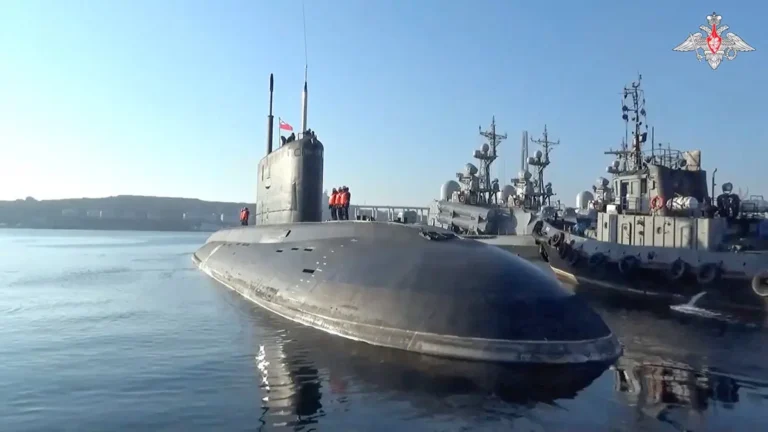Russia and China are holding joint naval drills, marking another step in their expanding military partnership. These exercises highlight the strong relationship between the two countries, which has grown more visible since the leaders signed a strategic agreement in early 2022.
Russian President Vladimir Putin and Chinese President Xi Jinping made their close alliance official during a summit just days before Russia launched its full-scale invasion of Ukraine. That February 2022 meeting, held in Beijing, saw both nations declare a “no limits” partnership. At the time, the world watched closely, concerned that China might take an active role in the war.
Global leaders feared a scenario where China would support Russia directly in its military campaign against Ukraine. Such involvement might have led to a wider global conflict, especially if the West had responded to China’s military actions with sanctions or countermeasures.
However, that did not happen. While China has offered political and economic support to Moscow, it has avoided direct military engagement. Beijing has walked a careful line, officially calling for peace and dialogue, even as it maintains strong ties with Russia.
This latest round of joint naval exercises further demonstrates the nations’ military cooperation. The drills, taking place in the Asia-Pacific region, involve warships, aircraft, and submarines from both countries. The stated goal is to improve joint command operations and boost maritime security, according to defense officials.
The exercises are part of a broader strategy by both nations to challenge the influence of the United States and its allies in the Pacific. With increasing Western military presence near China’s coastlines and in areas close to Russian waters, these drills serve as a reminder of the growing alignment between Beijing and Moscow.
Defense analysts say this cooperation could alter the balance of power in the region. The United States, Japan, Australia, and other countries are likely watching closely. Some experts believe that while China stays out of the war in Ukraine, it uses these drills to reinforce its message: it will not be isolated, and it has strong allies.
Meanwhile, Russia benefits from this partnership by gaining economic and political support at a time when many Western countries have imposed sanctions. With its economy under pressure and its military stretched in Ukraine, Moscow values any sign of global backing.
China also sees value in maintaining close ties with Russia. As tensions with the United States grow over Taiwan, trade, and regional dominance, Beijing is building strategic depth by working with Moscow. Both countries share a goal of challenging what they see as a Western-dominated international order.
Despite these shows of unity, China remains careful. It has avoided sending weapons to Russia or breaking international sanctions. At the same time, it has increased imports of Russian oil and gas, helping ease some of Moscow’s economic pain.
In recent months, both countries have conducted several joint patrols and training exercises. These include air force drills over the Sea of Japan and earlier naval exercises in the East China Sea. All of these actions underline the evolving defense cooperation between the two countries.
While the joint drills do not yet represent a formal military alliance, they show that the two powers are growing more comfortable working together. This could have long-term effects on global security, especially if future conflicts arise in the Asia-Pacific region.
In summary, the Russia-China naval drills are more than just a show of strength. They are a signal to the world that these two countries are drawing closer, not only in words but in action. As global tensions rise, their cooperation could become a key factor shaping the international balance of power in the years to come.







